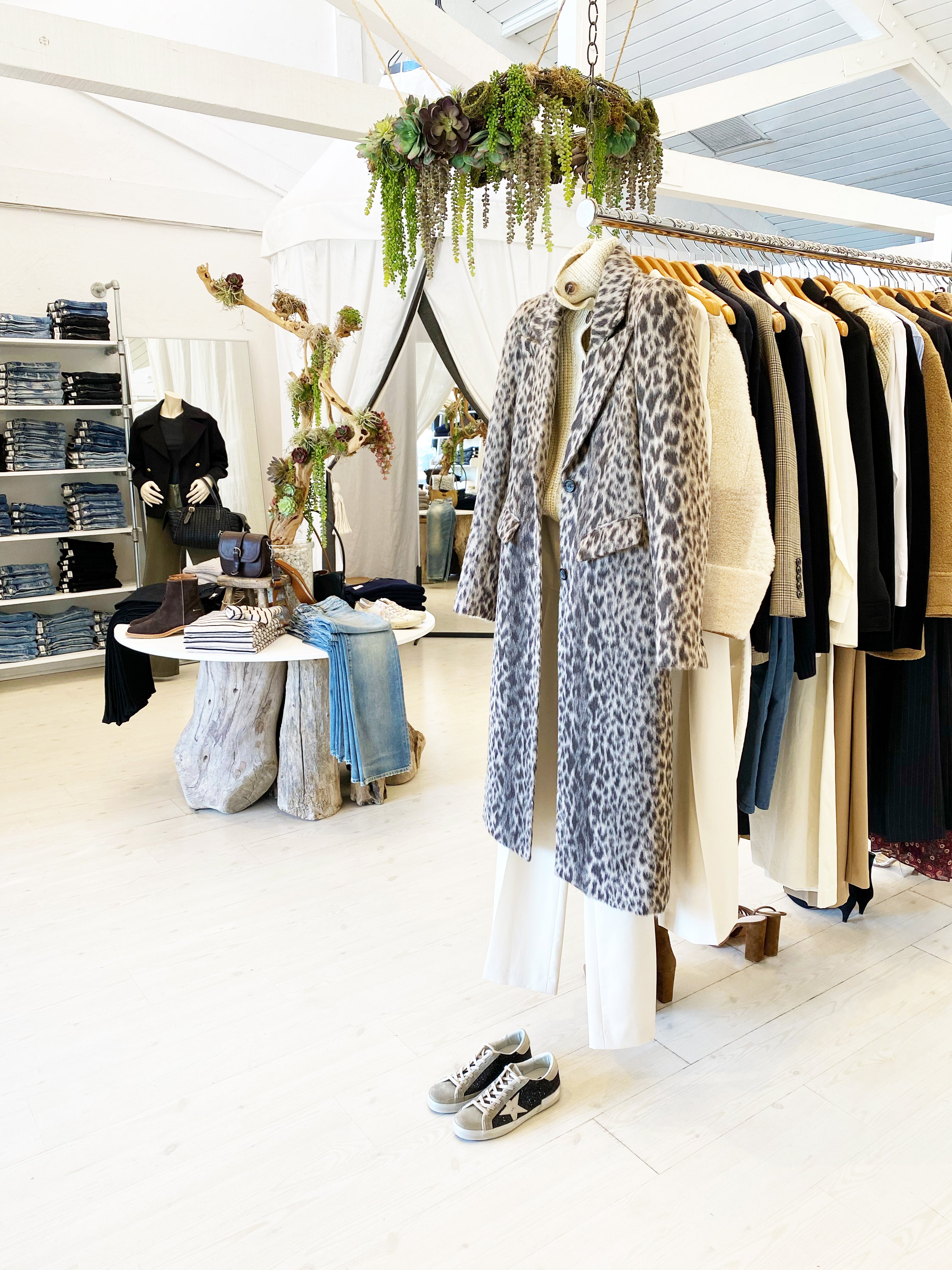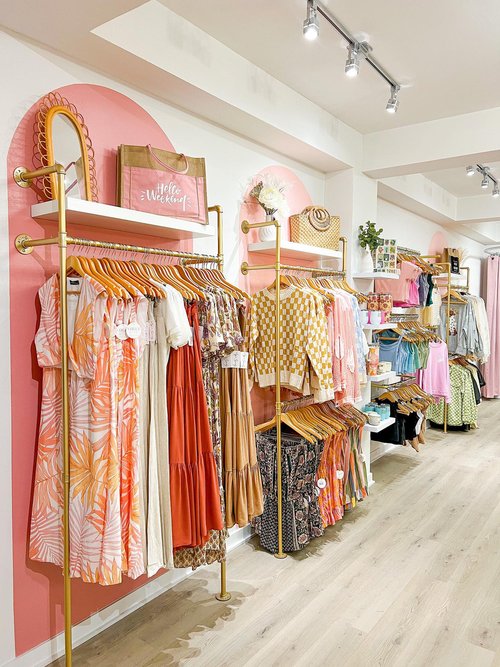Exploring the World of Sustainable Boutique Fashion Brands
Lasting Fashion: Just How Eco-Friendly Apparel Is Shaping the Future of Style
As the style market encounters boosting scrutiny over its environmental influence, the increase of sustainable fashion offers a promising alternative that lines up style with ecological duty. boutique fashion. Exactly how does this motion really affect the future trajectory of style, and what obstacles lie ahead in its prevalent adoption?
Innovative Sustainable Products
As the fashion industry grapples with its ecological impact, innovative sustainable products have actually emerged as an essential solution for lowering ecological impacts. These materials not only minimize dependence on fossil gas but likewise reduce hazardous pesticide use and water usage.
In addition to plant-based products, developments in biofabrication have actually caused the growth of lab-grown textiles. Mycelium natural leather, stemmed from mushroom origins, offers a flexible and naturally degradable option to animal natural leather. Its production leads to significantly lower carbon emissions and water use, making it a more sustainable choice for style developers seeking to straighten with green methods.
Recycled products are additionally acquiring traction, with polyester made from recycled plastic containers standing for a significant development. This development not only draws away plastic waste from garbage dumps and seas yet additionally reduces power usage contrasted to creating virgin polyester. Together, these materials underscore the potential for an extra sustainable garment industry, leading the way for eco mindful design and production.
Eco-Conscious Production
Building on the developments in sustainable products, the fashion market is also re-evaluating its production processes to additionally decrease ecological effect. Secret approaches consist of reducing water usage, minimizing carbon emissions, and eliminating dangerous chemicals.
Another essential aspect is the reduction of harmful chemicals traditionally made use of in dyeing and completing textiles. Eco-conscious makers are changing in the direction of plant-based dyes and waterless dyeing modern technologies, which not only guard regional communities however also boost employee security. Advancements like digital printing reduce fabric waste and power consumption, providing a cleaner choice to standard techniques.
In addition, transparency and traceability have ended up being extremely important. With the development of blockchain modern technology, firms can now provide in-depth understandings into their supply chains, making certain environmentally friendly and moral techniques at each step. This openness develops consumer trust and urges brands to preserve high sustainability criteria. As the need for eco-conscious products expands, manufacturers are urged to innovate, making sure that the future of style is both stylish and sustainable.
The Increase of Upcycling
Upcycling, a transformative technique in lasting fashion, involves creatively repurposing disposed of products right into brand-new, premium items. This ingenious approach not only minimizes waste however also reduces the need for raw materials, consequently reducing the environmental effect of clothes manufacturing. By reimagining and rebuilding existing things, developers and fashion brands have the ability to instill creativity into their collections while advertising ecological obligation.

In addition, the upcycling motion has actually encouraged small services and independent developers, that usually lead in advancement as a result of their agility and creativity. By profiting from the abundant availability of unused materials, these entities add to a circular economic situation, showing that fashion can be both sustainable and stylish. Via upcycling, the market takes substantial strides towards a much more liable and conscious future.
Thrift Society's Impact
The burgeoning thrift society significantly improves the landscape of lasting fashion, stressing the importance of mindful consumption. This cultural shift urges customers to embrace used clothing, thus lowering the demand for new garment production like this and lessening environmental impact. Thrift purchasing not only extends the lifecycle of apparel but additionally reduces the carbon footprint connected with manufacturing, carrying, and disposing of apparel.
A crucial facet of second hand culture is its democratization of style. By supplying a wide selection of styles from numerous eras at cost effective prices, second hand shops make style easily accessible to a broader target market. This ease of access fosters a feeling of uniqueness and creativity, as consumers mix and suit one-of-a-kind items to curate personalized you can find out more closets without adding to the quick fashion cycle.
In addition, thrift society promotes circularity in style, aligning with the principles of a round economy. By recirculating garments, the cycle of waste is interrupted, and sources are preserved. This technique sustains a change from a straight "take-make-dispose" version to a more lasting structure. As more customers and developers embrace second hand culture, the fashion business is obliged to adjust, incorporating lasting Home Page practices to fulfill the expanding need for eco-conscious alternatives.

Future Trends in vogue
Fashion's development is progressively shaped by sustainability-driven efforts and technological technologies. As consumers come to be more ecologically mindful, the market is responding with groundbreaking advancements that redefine the future of style. One prominent fad is the surge of electronic fashion, where online garments can be worn in increased reality environments, dramatically minimizing fabric waste. This change not just accommodates the digital-savvy customer but also decreases the environmental footprint commonly connected with garment production.
In addition, the integration of blockchain technology supplies new opportunities in transparency and traceability, allowing consumers to verify the sustainability credentials of their clothes. boutique fashion. This makes certain accountability in supply chains and promotes ethical sourcing practices. 3D printing is yet another advancement that promises to transform making procedures by making it possible for on-demand manufacturing, therefore decreasing excess stock and waste
Furthermore, the advancement of bio-fabricated materials, such as lab-grown natural leather and plant-based fabrics, offers lasting alternatives to typical products. These technologies reduce dependence on pet products and resource-intensive plants. As these technologies develop, they are positioned to transform the style landscape, combining design with sustainability. The future of fashion, for that reason, depends on a smooth mix of technology, advancement, and eco-friendly duty.
Conclusion
The makeover of the garment industry via lasting techniques shows an essential change in the direction of ecological accountability. The assimilation of cutting-edge materials, eco-conscious production methods, and the embracement of upcycling and second hand culture emphasizes a commitment to minimizing ecological footprints. As these techniques gain energy, they redefine the sector's story by focusing on ethical and lasting selections. This advancement not only aligns fashion with ecological sustainability but likewise establishes a precedent for future fads concentrated on obligation and innovation.
As the style market deals with boosting analysis over its environmental influence, the surge of sustainable fashion offers an encouraging choice that straightens style with ecological responsibility.As the fashion market grapples with its environmental effect, cutting-edge sustainable materials have actually arised as a vital option for reducing environmental footprints. With each other, these materials underscore the possibility for a much more lasting style market, paving the method for eco mindful design and production.
Building on the developments in lasting materials, the style market is additionally re-evaluating its manufacturing processes to even more lower environmental impact. boutique fashion.Upcycling, a transformative method in lasting fashion, involves creatively repurposing thrown out products into new, high-quality products